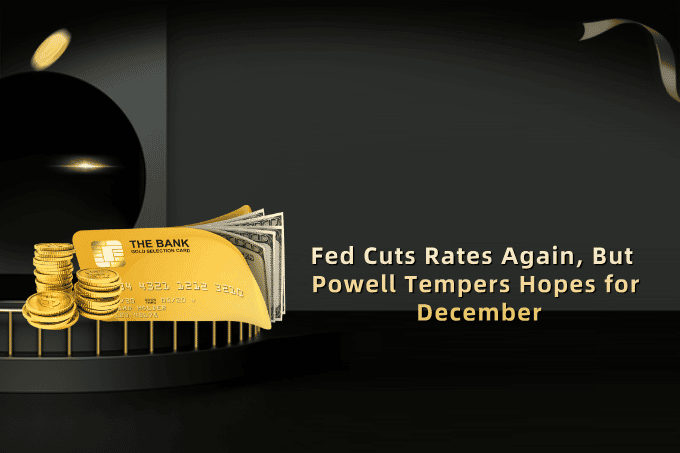
The Federal Reserve delivered its second straight interest rate cut on Wednesday, lowering the benchmark federal funds rate to a range of 3.75%–4%. But while markets initially cheered, Chair Jerome Powell quickly cooled expectations for another move in December, warning that a further cut is "not a foregone conclusion."
A Split Committee
The decision passed by a 10-2 vote, with dissent from both sides. Governor Stephen Miran, a Trump appointee, pushed for a larger half-point cut, while Kansas City Fed President Jeffrey Schmid argued against cutting at all. The split highlights the Fed’s balancing act: easing policy to support growth while keeping inflation in check.
The rate cut also affects consumer borrowing, setting benchmarks for mortgages, auto loans, and credit cards.
QT Winds Down
Alongside the rate move, the Fed announced it will end quantitative tightening (QT) on December 1. The balance sheet runoff has already reduced holdings by about $2.3 trillion, but recent strains in short-term lending markets raised concerns that the roll-off had gone far enough.
An implementation note said proceeds from maturing mortgage-backed securities will now be rolled into shorter-term Treasury bills, signaling a more cautious approach.
Powell’s Warning
At his press conference, Powell emphasized divisions within the committee:
"A further reduction in the policy rate at the December meeting is not a foregone conclusion. Far from it."
He added that a "growing chorus" of Fed officials favors waiting at least one cycle before cutting again. Traders quickly adjusted, lowering the odds of a December cut to 67% from 90% the day before, according to CME’s FedWatch tool.
Flying Blind on Data
Complicating matters, the Fed is operating with limited visibility. With government data collection suspended, policymakers have only a handful of indicators, such as last week’s CPI report, which showed inflation running at 3% year-over-year, driven by energy costs and tariff-linked items.
The Fed’s statement acknowledged the uncertainty, noting that job gains have slowed, unemployment has edged up, and inflation remains "somewhat elevated." Officials also flagged rising downside risks to employment.
Market Reaction
Stocks initially rose on the rate cut but slipped after Powell’s cautious tone. Major averages later clawed back some gains, supported by strong earnings from Big Tech. Historically, markets have tended to rally when the Fed cuts rates during expansions, though easier policy also risks reigniting inflation.
Looking Ahead
The Fed’s next meeting in December looms large. With inflation still above target and the labor market showing signs of fatigue, Powell and his colleagues face a tricky balancing act. Ending QT may ease financial conditions, but whether another rate cut follows will depend on the limited data available—and the Fed’s tolerance for risk.
For now, investors are left with a mixed message: policy is easing, but not on autopilot.
